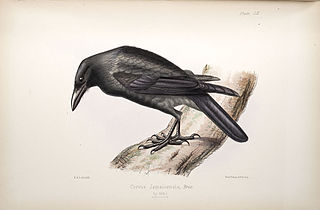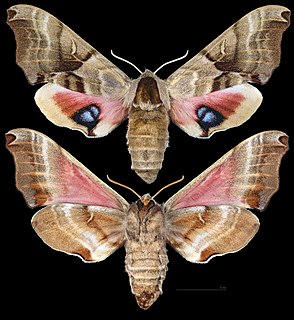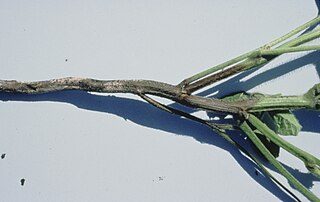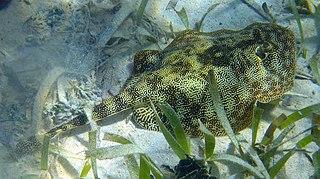
Dianthus caryophyllus, commonly known as the carnation or clove pink, is a species of Dianthus. It is likely native to the Mediterranean region but its exact range is unknown due to extensive cultivation for the last 2,000 years.

Potassium bicarbonate (IUPAC name: potassium hydrogencarbonate, also known as potassium acid carbonate) is the inorganic compound with the chemical formula KHCO3. It is a white solid.

The Jamaican crow is a comparatively small corvid. It shares several key morphological features with two other West Indian species, the Cuban crow and the white-necked crow of Hispaniola, which are very closely related to it.

Sooty mold is a collective term for different Ascomycete fungi, which includes many genera, commonly Cladosporium and Alternaria. It grows on plants and their fruit, but also environmental objects, like fences, garden furniture, stones, and even cars. The mold benefits from either a sugary exudate produced by the plant or fruit, or honeydew-secreting insects or sap suckers the plant may be infested by.

Smerinthus jamaicensis, the twin-spotted sphinx, is a moth of the family Sphingidae. The species was first described by Dru Drury in 1773.

In organic chemistry, a dithiocarbamate is a functional group with the general formula R2NC(S)SR and structure >N−C(=S)−S−. It is the analog of a carbamate in which both oxygen atoms are replaced by sulfur atoms.

Crotalus oreganus, commonly known as the (northern) Pacific rattlesnake, is a venomous pit viper species found in western North America from the Baja California Peninsula to the southern interior of British Columbia.

Chroogomphus vinicolor, commonly known as the wine-cap Chroogomphus or the pine spike, is a species of mushroom in the family Gomphidiaceae. Found in North America and the Dominican Republic, mushrooms grow on the ground under pine trees. Fruit bodies have reddish-brown, shiny caps atop tapered stems. The gills are thick, initially pale orange before turning blackish, and extend a short way down the length of the stem. Although the mushroom is edible, and sold in local markets in Mexico, it is not highly rated. Distinguishing this species from some other similar Chroogomphus species is difficult, as their morphology is similar, and cap coloration is too variable to be a reliable characteristic. C. vinicolor is differentiated from the European C. rutilus and the North American C. ochraceus by the thickness of its cystidial walls.

Phytophthora megasperma is a species of water mould in the family Peronosporaceae. It is well known as a plant pathogen with many hosts. It often causes a plant disease called root rot.

Phyllachora pomigena is a plant pathogen responsible for Sooty blotch and flyspeck disease, a disease affecting apples and pears. It appears as a brown or black blotch on the fruit. Spots may coalesce to cover the entire fruit. During the summer these diseases develop during cool rainy weather, particularly in dense, unpruned trees with poor air circulation. Although unsightly, the fruit is still edible. The sooty blotch will wipe off of the fruit.
Schiffnerula cannabis is a plant pathogen infecting hemp. It is one of the many 88 species of fungi which attack Cannabis and with time. The black mildew of Cannabis, compared to gray mold caused by Botrytis cinerea, and the problems it causes are often not extreme as opposed to the gray mold with the potential to wipe a crop in merely a week.

The yellow stingray is a species of stingray in the family Urotrygonidae, found in the tropical western Atlantic Ocean from North Carolina to Trinidad. This bottom-dwelling species inhabits sandy, muddy, or seagrass bottoms in shallow inshore waters, commonly near coral reefs. Reaching no more than 36 cm (14 in) across, the yellow stingray has a round pectoral fin disc and a short tail with a well-developed caudal fin. It has a highly variable but distinctive dorsal color pattern consisting of either light-on-dark or dark-on-light reticulations forming spots and blotches, and can rapidly change the tonality of this coloration to improve its camouflage.

Tuberous begonias are a group of Begonia cultivars, sometimes regarded as some of the most spectacular of the genus.

Toxotes chatareus, sometimes known by the common names common archerfish, seven-spot archerfish or largescale archerfish, is a species of perciform fish in the archerfish genus Toxotes.

The sooty grunter, also known by the name black bream, blubberlips, Northern grunter or purple grunter, is a species of freshwater ray-finned fish, a grunter from the family Terapontidae. It inhabits coastal and inland freshwater creeks and rivers of northern Australia.

Morchella tomentosa, commonly called the gray, fuzzy foot, or black foot morel, is a species of fungus in the family Morchellaceae. M. tomentosa is a fire-associated species described from western North America, formally described as new to science in 2008.
Sooty blotch and flyspeck (SBFS) or apple summer disease is a plant disease caused by a complex of saprophytic fungi which colonize the epicuticular wax layer of apple. It is found worldwide in regions with moist growing seasons.

Hagnagora mortipax is a species of moth of the family Geometridae first described by Arthur Gardiner Butler in 1872. It is found in Costa Rica and Ecuador.
Carnation Italian ringspot virus is a virus that is a member of the Tombusviridae family. It can create C-shaped or doughnut-shaped structures that often join with other MVBs in the infected cell. It is found wherever carnations are grown by vegetative multiplication in temperate regions. It is isolated from apple, pear and sour cherry trees in the German Democratic Republic.

Colletotrichum fioriniae is a fungal plant pathogen and endophyte of fruits and foliage of many broadleaved plants worldwide. It causes diseases on agriculturally important crops, including anthracnose of strawberry, ripe rot of grapes, bitter rot of apple, anthracnose of peach, and anthracnose of blueberry. Its ecological role in the natural environment is less well understood, other than it is a common leaf endophyte of many temperate trees and shrubs and in some cases may function as an entomopathogen.

















